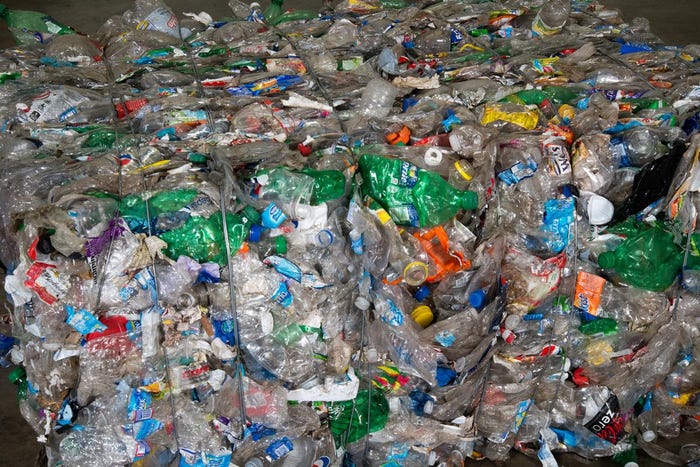Study shows how light impacts rPET quality
Plastic Technologies Inc. (PTI; Holland, OH), a global leader in polyethylene terephthalate (PET) package development, recently published a whitepaper that found post-consumer bottles exposed to ultraviolet (UV) light prior to recycling has a negative impact on the physical properties for the next generation of recycled PET (rPET) bottles.
August 5, 2015
Plastic Technologies Inc. (PTI; Holland, OH), a global leader in polyethylene terephthalate (PET) package development, recently published a whitepaper that found post-consumer bottles exposed to ultraviolet (UV) light prior to recycling has a negative impact on the physical properties for the next generation of recycled PET (rPET) bottles.
 Intrinsic thickness, yellowing, cloudiness are just some of the traits that provide complications when using rPET along with virgin material. rPET producers have engineered elaborate methods to downplay those traits in order to develop material that provides the desired environmental qualities along with key visual and processing properties.
Intrinsic thickness, yellowing, cloudiness are just some of the traits that provide complications when using rPET along with virgin material. rPET producers have engineered elaborate methods to downplay those traits in order to develop material that provides the desired environmental qualities along with key visual and processing properties.
The bottles used in the study were not tightly packed into large bales. Sunlight could shine through the multiple layers of bottle sidewalls, even reaching the bottles located at the bottom of the open crate.
“What the average effect might be on an entire bale of bottles compared to what was seen in this study is a matter of debate. However, one should consider all the potential causes of yellowing that can that limit the percentage of recycled PET that can be used. Exposure to UV radiation, whether it is from outside bale storage or possibly even exposure to fluorescent lighting in retail stores, should be considered as another contributor to rPET quality degradation,†said Dr. Frank Schloss, Vice President.
Storage conditions are just another thing to take into consideration in that it can be added to the natural tendency of PET to yellow with each additional melting. This is due to adhesive label residues, trace amounts of residual label material, inks and coatings that can bleed from the label onto the PET flake, as well as additives that cannot be removed by the washing process.
PlasticsToday reached out to Julie Brown-Voyles, Recycling and Material Evaluations at PTI, who is also one of the authors of the whitepaper, asking what is being done in terms of storage conditions.
“The research findings give recyclers another tool to improve the quality of their product. We have not received any specific feedback from recyclers indicating any action taken as a result of our research, but we are hoping that they take our findings into consideration,†said Brown-Voyles.
“As an industry, we have focused on how package components affect next generation materials, but haven’t really considered storage impact. The more effort we make to remove all of the quality impediments, the greater the chance that our next generation materials will meet marketing, processing and environmental objectives,†Schloss adds.
About the Author(s)
You May Also Like


